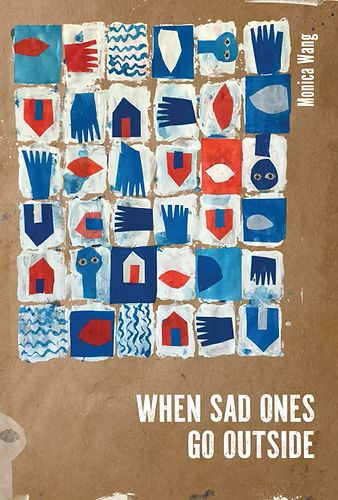They Could Live with Themselves by Jodi Paloni is a strong collection of short stories linked by the rural town of Stark Run, Vermont. The stories range in point of view and voice, from first-person perspectives of children to third-person point of view closely following a grandfather. Each story is self-contained yet enhanced by the others so that the collection ends with a clear picture of the New England town. Full of quiet tensions and unforgettable characters, Paloni’s collection presses into the daily conflicts and triumphs of the characters in ways that are both familiar and new.
They Could Live with Themselves by Jodi Paloni is a strong collection of short stories linked by the rural town of Stark Run, Vermont. The stories range in point of view and voice, from first-person perspectives of children to third-person point of view closely following a grandfather. Each story is self-contained yet enhanced by the others so that the collection ends with a clear picture of the New England town. Full of quiet tensions and unforgettable characters, Paloni’s collection presses into the daily conflicts and triumphs of the characters in ways that are both familiar and new.
Paloni’s characters and their roles in Stark Run are clear from the moment they are introduced, drawing the reader in to the details and complexities of small-town life. The opening of “Accommodations” highlights the setting of a local general store and the interaction of characters there:
Wren mopped the scuffed up floors of the old general store to the beat of Bob Marley and the Wailers. As she sloshed gritty bucket water on the linoleum in the end aisle, she peered through the glass storefront. January snow had turned to sleet. A Chevy Silverado pulled in and stretched long and black like a hearse beside the lone fuel pump in the lot. Its driver, a rusty-bearded man, about her age, she guessed, fiftyish, got out and tugged on the nozzle. He wore no hat or coat. He looked towards the entrance. He reminded Wren of a Van Gogh self-portrait, scowling and grainy through the spattered glass. A floodlight shone on the fuel pump island framing the scene like one in a snow globe, but the fixtures were odd—pump, truck, man—in place of little cheery cottages with shrubs.
In another story opening, “Ms. Bellamy,” readers can see what kind of teacher Maeve Bellamy is and how she’ll handle impending conflicts:
The principal invited Maeve into his slate-gray office. Though he offered her a chair, she remained standing, a soaring five-feet eleven-inches topped with cloud-white hair, her spine as straight as the flagpole in front of the high school. He leaned back in his black leather chair, Tom Bender, a green recruit who should not cost the town much money, and yet a fancy new glass-top desk filled the space between them. Maeve placed her hands flat on the transparent surface and positioned her chin to maintain eye contact. After a few requisite niceties, the principal asked if she would consider taking an early retirement package at the end of the school year.
One remarkable, recurring character in the collection is Meredith Wade, a high school art teacher. Many times she is present for only a scene or two, so in glimpses the reader sees how she impacts the community. In “Deep End,” she comforts a young girl whose sister has drowned.
Outside, Meredith Wade turned to her and said, “You understand that it wasn’t your fault. You do understand that, don’t you?” The woman seemed to need Jillanna to believe her. “You’re just a child,” she said.
Jillanna nodded. She felt a mouse-like curl in her throat. She bent her head and swallowed. Meredith Wade placed two palms on the top of Jillanna’s head, lightly, as if forming a cap made of feathers. “Help your mother, Jilly. She needs you.” Then the touch was gone.
Jilly. Only her closest friends called her Jilly, not grown-ups. As she watched Meredith Wade drive away in a VW Beetle the color of the sky, Jillanna wonder how the woman could know her so well. It was as if Meredith Wade could see into her heart like an angel.
At other times the story is centered around Meredith, such as in “The Third Element,” and the reader is privy to the intimacy of Meredith’s artistic process: “Drawing him feels like summer should, no stress, no thick dull strain of grief inside her chest.”
Written in the same vein as Elizabeth’s Strout’s Olive Kitteridge, Jodi Paloni’s They Could Live with Themselves exposes the struggles and successes of rural New Englanders. With careful language and masterful storytelling, the stories in the collection are artful, honest, and comforting, as if introducing strangers we might have already known.





